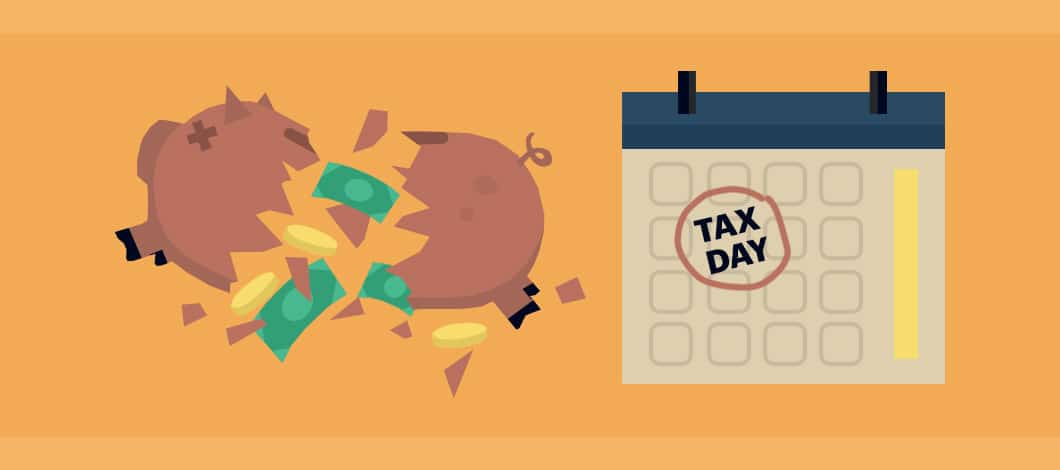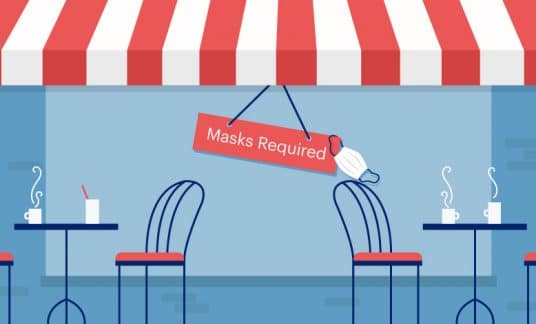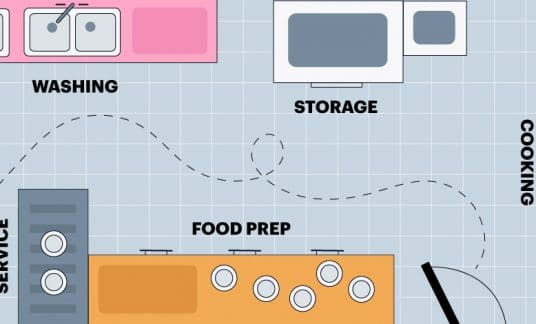The bills keep coming, even if the sales don’t. Indeed, a slow week or season can result in serious retail cash-flow management problems.
Overcome challenges by learning how to manage cash flow in retail and avoid common pitfalls.
Common Cash-Flow Issues in Business
Cash flow refers to the money coming in and going out of your business.
On the books, you may earn a profit. But the day-to-day financial juggling act is a bit more complicated.
According to Statista, In the 4th quarter of 2020, 12% of small business owners said their cash flow would be “poor or very poor” during the next 12 months.
Another 23% remained neutral, while 65% felt “their cash flow would be good or very good.”
However, retailers face various cash-flow problems that lead to temporary or long-term headaches.
Inventory Management Issues
Depending on your suppliers’ payment terms, you may end up paying for inventory in full months before seeing a return.
In some cases, it’s merely part of doing business. But holding onto products for too long or investing too much money into inventory can lead to cash-flow problems.
Unclear Financial Outlook
At first glance, your profit and loss sheet may look pretty good. Your ecommerce or brick-and-mortar store sold enough to cover your bills and then some.
Except, a profit-and-loss statement doesn’t forecast what your cash flow looks like next month. Therefore, relying on it for decision-making could result in cash-flow problems.
Accounting issues in the retail industry often stem from the inability to adequately predict sales and expenses months in advance.
Minimal Cash Reserves
Making it through lean months can be a struggle without cash reserves, leaving retailers feeling like they’re always playing catch-up.
Moreover, a low savings balance also may prevent you from taking advantage of opportunities based on the latest trends or in-demand yet low-stock items.
Poor Profit Margins
Profit margins on goods affect your cash flow. During times of inflation and high demand, inventory expenses can skyrocket.
But raising prices sharply may cause customers to flee.
Store owners without real-time inventory and financial data don’t have access to critical data used to raise prices incrementally.
Unknown or Little Known Losses
The small things add up, from increases to your common area maintenance (CAM) fee to data entry blunders in accounting.
Other issues, such as employee theft or shoplifting, reduce your cash flow and may go unnoticed until major damage is done.
Growing Labor Expenses
Next to inventory, labor takes a considerable chunk out of your budget.
Keeping your store fully staffed during the off-season can result in significant cash-flow problems.
The cost of other full-time positions for accounting or customer service also affects retail cash-flow management.
How to Improve Retail Cash-Flow Management: 10 Methods
A healthy cash flow provides stability for your business and yourself.
Typically there are 2 methods for solving cash-flow problems: Increase sales or decrease expenses.
However, retailers have many options for fixing short-term cash-flow issues or preventing them from happening in the first place.
1. Get a Grip on Your Financials
A cash-flow analysis, also called a cash-flow forecast, gives a retail business an idea of how long it can operate with the cash it has on hand.
It’s a report that you can pull up using your accounting program or data found on your accounting dashboard.
In addition, integrated point-of-sale (POS) and inventory systems offer extra insights into your sales and assets.
When combined, these reports help store owners make decisions that positively affect cash flow and reduce risks.
2. Assess Your Inventory
Ineffective inventory management can trap funds for months at a time or worse, cause retailers to slash prices and lose profits.
For instance, getting a great deal when buying a higher volume of products can work in your favor if sold quickly.
Otherwise, the benefits from saving money disappear when those items don’t sell and increase your cash flow.
Avoid cash-flow problems by:
- Optimizing inventory management tactics
- Using specific sales tactics to move stock from your shelves
- Liquidating some of your inventory to generate additional funds when needed
- Predicting supply and demand trends based on inventory data
- Selecting the best inventory costing method for your store
3. Increase Your Retail Sales
Need to reduce stock levels or pull in funds quickly? Various sales activities combined with compelling marketing campaigns may solve your cash-flow woes.
Use inventory data to select the right mix of products for displays or coupons. Additionally, bolster cash flow by promoting gift cards during your outreach efforts.
Ways to increase cash flow in retail include:
- Bundles: Grouping products takes away emphasis on individual prices and helps retailers move inventory.
- POP sales: Creative retail display ideas near your point of purchase (POP) entice shoppers to make last-minute buying decisions.
- Gift cards: Gift cards sales bring in revenue and increase brand awareness when used in conjunction with an effective marketing campaign.
- Planogram: Develop a planogram or blueprint for store shelves to optimize retail space and increase sales.
4. Keep an Eye on Losses
Pay attention to inventory discrepancies from employee theft, shoplifting or human error.
If you accept installment payments or layaway options, consider reviewing your policies or teaming up with buy-now, pay-later services such as Afterpay. These programs ease cash-flow problems by giving retailers cash now and requiring shoppers to pay off their Afterpay accounts.
5. Negotiate Credit Card Processing Fees
Credit card processing fees are inevitable in today’s digital-first environments. However, charges aren’t always set in stone.
Examine the payment types most used by your customers and the corresponding rates.
Ask yourself the following questions:
- Are you paying hefty fees for contactless payments, even when the card is present?
- Do other payment processors integrate with your POS system and offer lower rates?
- Can you encourage shoppers to choose one payment method over another?
- Will your credit card processing providers negotiate rates?

6. Avoid a Cash Crunch at Tax Time
When you’re experiencing cash-flow issues, you may be open to forgoing tax payments.
While it can get you out of a severe bind, you’ll incur additional fees and may need to enter into an agreement that takes a big chunk out of your monthly budget.
One of the best investments a small retail store can make is to work with accounting and tax professionals.
They’re aware of recent tax law changes affecting your finances and can make recommendations to avoid an unexpected bill.
Furthermore, accountants familiar with the retail industry can suggest ways to benefit by using unsold inventory in giveaways or writing off unused gift card balances.
7. Evaluate Labor Costs
Labor costs are rising, making staffing your store more expensive and putting retailers in difficult situations.
Although employing a full-time staff is ideal, store owners may want to consider:
- Outsourcing business tasks to professionals instead of paying a full-time employee
- Closing your shop during slow hours and not paying for labor on those days
- Reducing store hours and accepting appointments during slow seasons
- Developing a list of tasks for employees to complete when the store is empty
- Exploring retail technology trends that free up your time or reduce reliance on labor
8. Review Fees and Miscellaneous Expenses
If your store spends more than it earns, take a hard look at your expenses. Small fees add up, errors go unnoticed and retailers may miss opportunities to save money.
Consider the following ideas to improve your cash flow:
- Check out interest rates and annual fees for business credit cards. Can you negotiate a better deal?
- Look at monthly payments and see if you could earn cash back for using a credit card for those purchases.
- Negotiate favorable invoice dating terms with suppliers, so the payment due date aligns with your inventory turnover.
- Audit CAM fees to uncover excess costs for the maintenance of leased commercial space.
- Ask vendors if they’ll offer a discount for invoices paid before the due date.
- Identify subscriptions or non-essential items that you can cut if you’re facing cash-flow problems.
9. Consider External Funding
If you’re having difficulties improving cash flow, a line of credit or loan may help.
Retailers who repeatedly wonder “how to get cash flow for my business,” even after following the above methods, may look at other funding options.
Possible solutions include:
- Invoice factoring: Also known as accounts receivable financing, this funding type advances a percentage of money for unpaid invoices.
- Merchant cash advance: Obtain capital by taking out a loan against your future sales and paying regular payments or a portion of your credit card sales.
- Line of credit: A line of credit helps small businesses survive off-seasons or navigate a crisis by making funds available year-round.
10. Build a Cash Reserve
Putting aside funds to cover a slow season or economic downturn isn’t easy.
However, it’s the best way to reduce a cash crunch in mid-February when you’re purchasing inventory for summer.
Look for painless ways to save, such as earning cash back rewards on utilities (up to 3% with a Venmo card) and putting those “extra” funds into a savings account.
Optimize Your Retail Cash Flow Management
Generating a steady income is challenging for retailers.
Following financial best practices and leveraging technologies helps store owners maintain a healthy cash flow.











